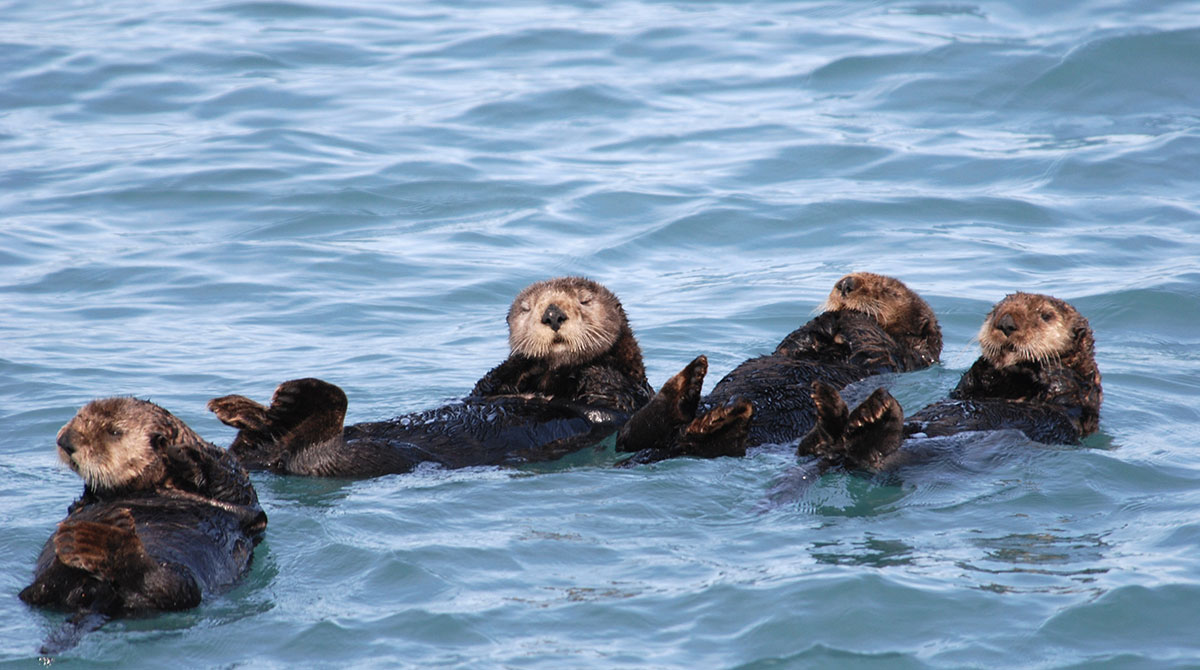Wildlife Health
Monterey Bay

Why is it a concern?
For “key” species in marine sanctuaries (e.g., keystone species, foundation species, indicator species, and other focal species) measures of condition and health can be important in determining the likelihood that these species will persist or recover and continue to provide vital ecosystem functions and services. Measures of condition and health may include growth rates, fecundity, recruitment, age-specific survival, tissue contaminant levels, pathologies (disease incidence, tumors, deformities), injuries and the presence and abundance of critical symbionts or parasite loads.
Among marine mammals, both the North Pacific Humpback Whale stock and Stellar Sea Lion population are stable or increasing. Sea otters in Monterey have been described as a "keystone species" for its role in structuring nearshore rocky communities. While sea otters were hunted nearly to extinction between 1741 and 1911, under international protection since 1911 and state protection since 1913, the California otter population has increased at a 6% to 7% annual rate since 1914. Monterey Bay National Marine Sanctuary staff and research partners continue to monitor the condition and health of this important species.
Forage species (e.g., krill, anchovies, and squid) directly and indirectly support the tremendous abundances and species diversity of higher trophic levels. Squid serve as both predator and prey in offshore food webs, and their populations appear to be influenced more by prevailing oceanographic conditions than by fishing pressure; although additional research is needed to better understand their population dynamics. Krill is also an important part of the pelagic food web. To assure the protection of this resource for the marine mammals, seabirds, and fishes that rely on krill as a primary food source, regulations prohibiting the harvest of krill in state waters of California, Oregon, and Washington were passed in 2000.
Overview of Research
| Project Name | PI and contacts | Links |
|---|---|---|
USGS Sea Otter Survey in California |
Brian Hatfield (USGS), Jim Estes, Tim Tinker |
http://sanctuarymonitoring.org/projects/project_info.php?projectID=100172&site=true |
Science Needs and Questions
- What are Motorized Personal Watercraft impacts to wildlife at the surface and submerged? What is the nature of impacts – visual, audible, physical?
Education and Outreach Material

References
Byers, J. E. 1999. The distribution of an introduced mollusc and its role in the long-term demise of a native confamilial species. Biological Invasions 1(4):339-353.
Caffrey, J. 2002. Biogeochemical cycling. Pages 215-236 In: Caffrey, J., M. Brown, W.B. Tyler, M. Silberstein (eds.) Changes in a California Estuary. Elkhorn Slough Foundation, Moss Landing, California.
Hardin, D., B. Bemis, C. Dominik, K. Starzel, D. Paradies. 2007. Literature review to characterize environmental contaminants that may affect the southern sea otter. A report submitted to the Monterey Bay National Marine Sanctuary, Sanctuary Integrated Monitoring Network (SIMoN) and Monterey Bay Sanctuary Foundation. 52pp.
Wasson, K., J. Nybakken, R. Kvitek, C. Braby, M. Silberstein. 2002. Invertebrates. Pages 135-162 In: J. Caffrey, M. Brown, W.B. Tyler, M. Silberstein (eds.) Changes in a California Estuary. Elkhorn Slough
Zimmerman, R.C. and J.M. Caffrey. 2002. Primary producers. Pages 118-134 In: J. Caffrey, M. Brown, W.B. Tyler, M. Silberstein (eds.) Changes in a California Estuary. Elkhorn Slough Foundation, Moss Landing, California.

